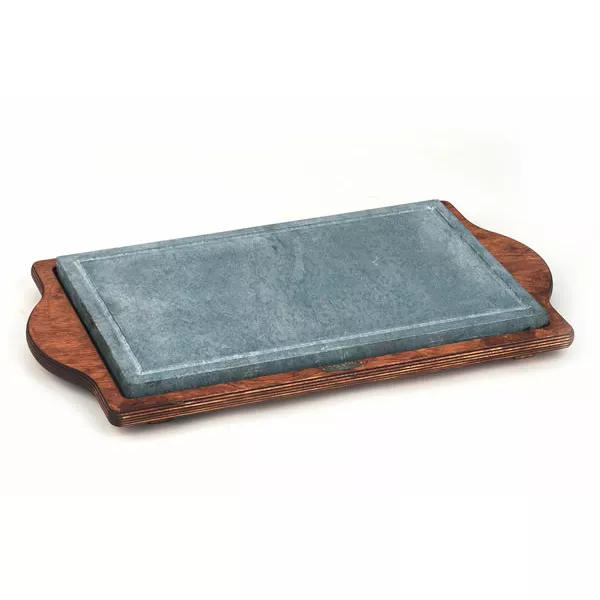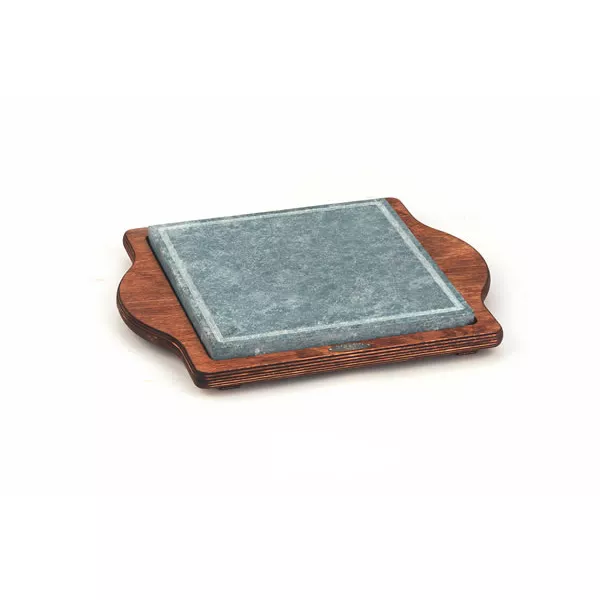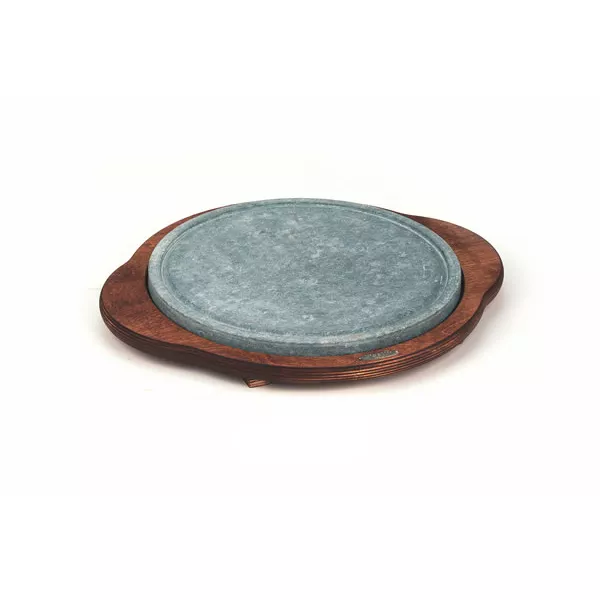SOAPSTONE cm.25X40 WITH WOODEN BASE
Bisetti Soapstone On Multi-layer Wood Chopping Board With Metal Notch And Spacers Base Dimensions Cm.30x52









CHARACTERISTICS OF THE STONE
- produced in a stone called STEATITE
- composed of 40/50% talc (therefore it is a natural non-stick) and 40/50% magnesite (it makes the stone resistant and compact);
- outstanding temperature retention properties;
- immune to the action of alkaline acids, therefore it cooks food preserving their natural aroma, not altering it;
- being a natural non-stick it does not allow the oil and/or the various substances contained in the food to be absorbed by the stone itself;
- withstands very high temperatures (up to 800°C);
INITIAL TREATMENT
1) place the stone in the oven and bring the temperature to 150° C for 30 minutes (this serves to dehydrate the stone by dilating its pores, favoring the treatment described in point 2)
2) remove the stone from the oven with a suitable glove, place it on a washable support (example: the burner grate of a common kitchen stove), wait a few minutes for the stone to cool down and oil the stone abundantly on both sides . We recommend the use of a refined seed oil (sunflower, soy, peanut, corn) that has a smoke point over 200°C. We strongly advise against extra virgin olive oil which has a low smoke point;
3) put the stone back in the oven bringing the temperature to 200°C and leave it in the oven for 1 hour. Leave the stone to "rest" in the oven until it reaches room temperature again. Now the stone is ready, and can be washed like a common pot, with detergent and using a non-abrasive sponge.
NB: the initial treatment has the purpose of hardening the stone making it durable over time and it is therefore advisable to repeat this treatment periodically.
WARNINGS
- avoid any type of thermal shock to the stone which could cause it to break. Example: do not put the hot stone in contact with cold and/or wet surfaces, much less immerse it in water; do not put the stone at room temperature, in an oven already at high temperatures (over 200° C).
- never put the stone in direct contact with the flame: always use a flame arrester;
- any small veins or "micro" cracks that could form after the first uses do not compromise its use
[CART_DESCR]



